
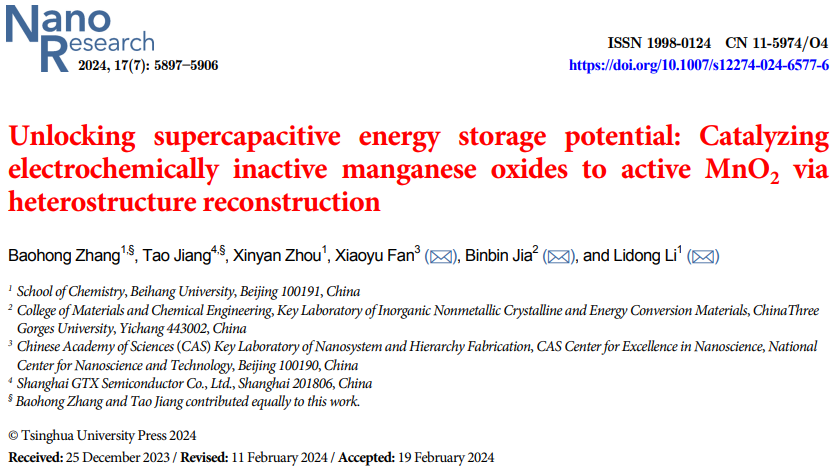
1. Introduction
-
Supercapacitors (SCs) have higher power density and longer cycle life compared to lithium-ion batteries, but there is still room for improvement in energy density.
-
Manganese oxides (MnOx) have garnered significant attention as pseudocapacitive materials due to their ability to exhibit various Mn(x+) oxidation states in redox reactions.
-
However, the main bottleneck of MnOx is its poor conductivity, which limits its application in supercapacitors.
-
Interface engineering is a widely recognized concept used to enhance electrode activity.
2. Experimental Section
This section details the chemicals and materials used in the experiments, material preparation methods, material characterization methods, electrochemical measurements, and electrochemical calculation methods.

3. Results and Discussion
-
The researchers prepared a nanorod array of crystalline CuO/amorphous MnO2−x using a direct method.
-
This heterostructure significantly enhances the electrochemical active content of MnO2.
-
The electrochemical measurement results show that this nanorod array exhibits excellent capacitance performance.
Density functional theory (DFT) calculations further reveal the electronic structure and charge distribution characteristics of this heterostructure.
4. Illustrated Guide
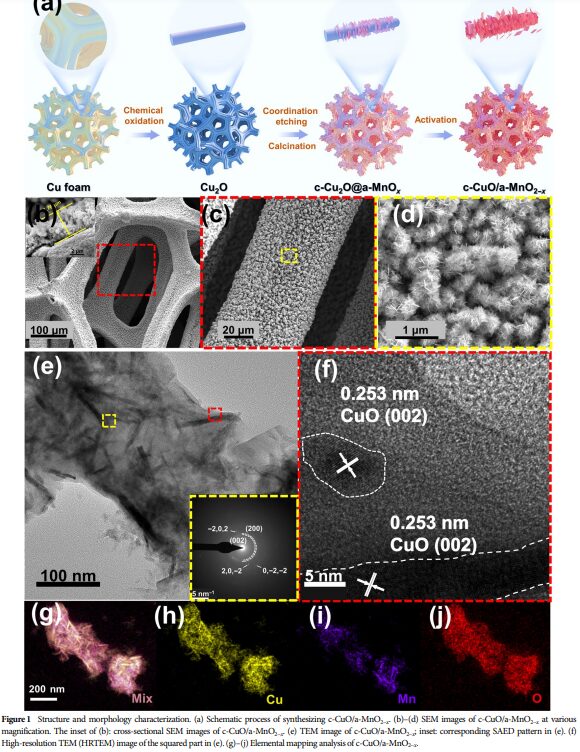
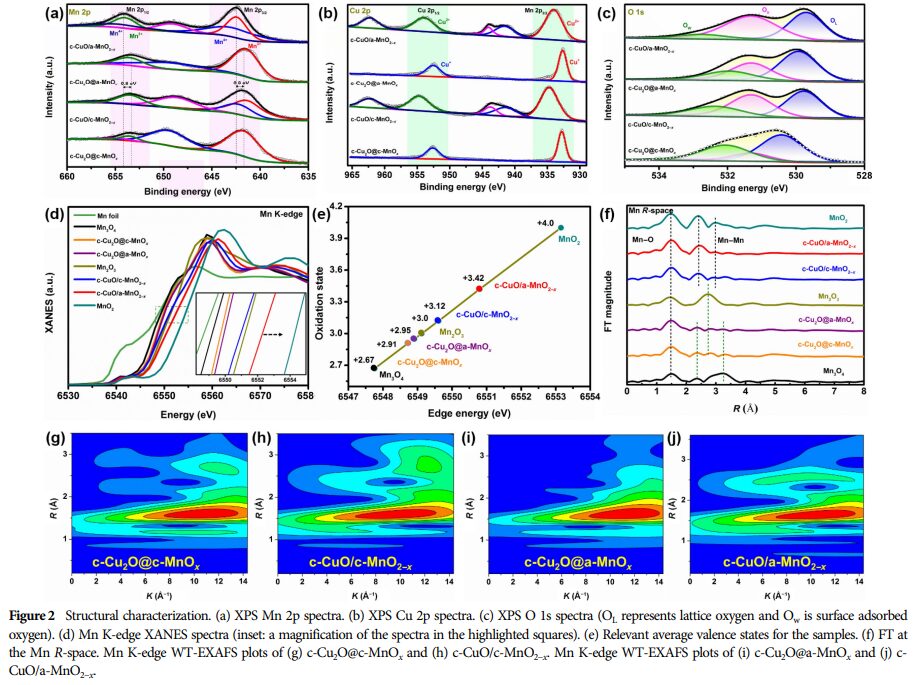
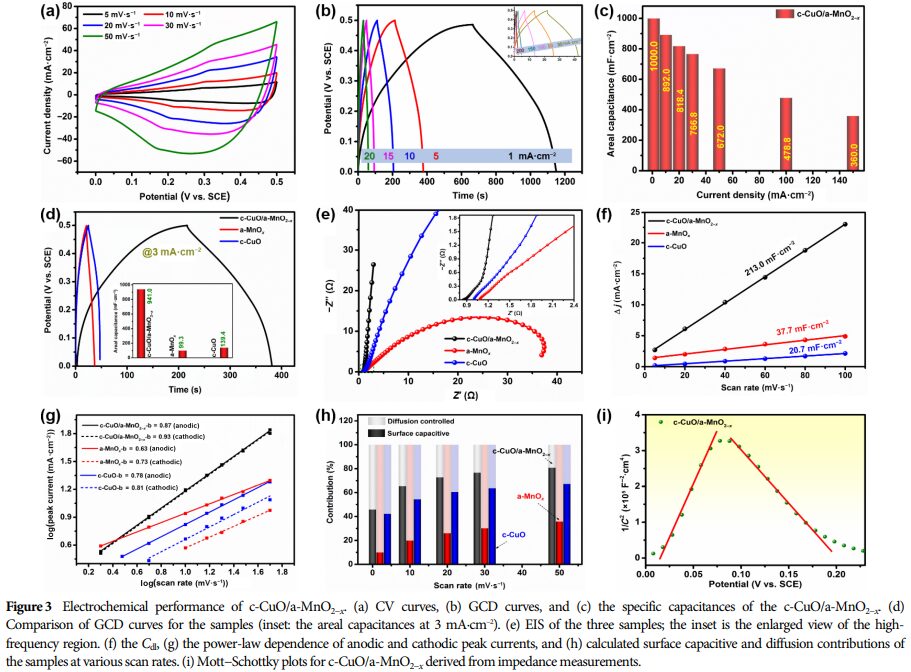
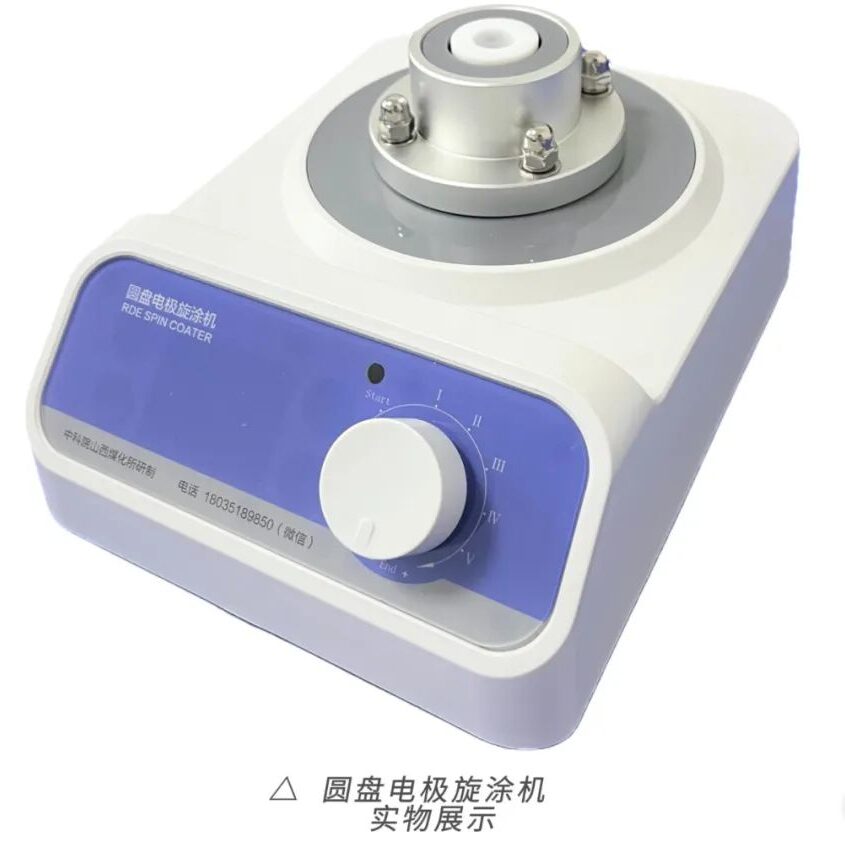
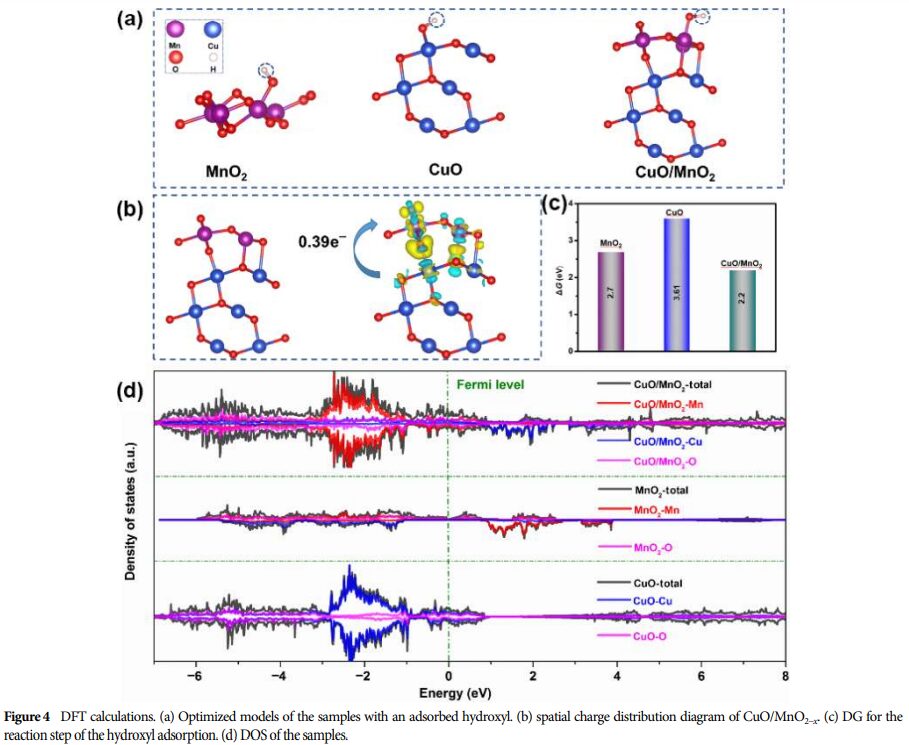
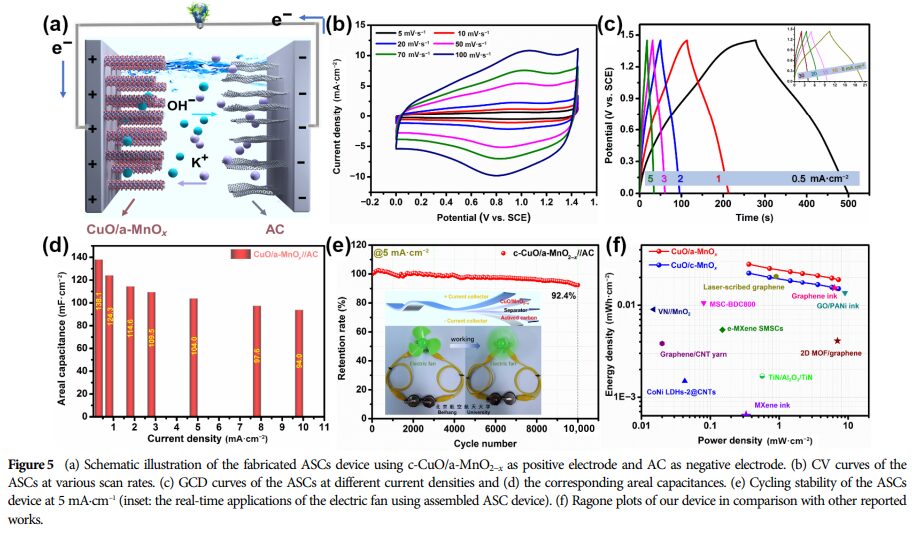
5. Conclusion
-
This study successfully designed and prepared a three-dimensional crystalline CuO/amorphous MnO2−x heterostructured nanorod array as an efficient capacitive anode.
-
This design significantly enhances the electrochemical activity of MnO2 and greatly improves the performance of supercapacitors.
-
This study provides new ideas and methods for the design of supercapacitor electrode materials.
The research findings in this document are of great significance for promoting the performance enhancement of supercapacitor systems and provide new directions for the design and preparation of novel electrode materials.